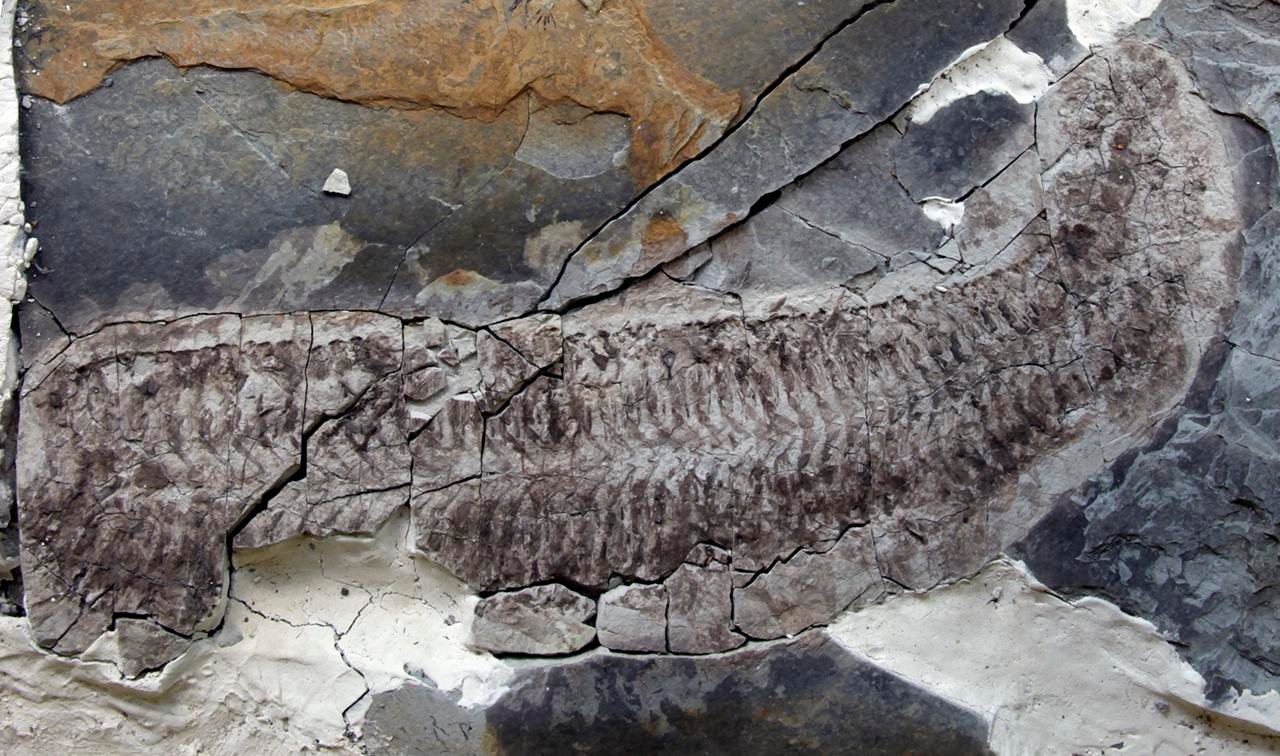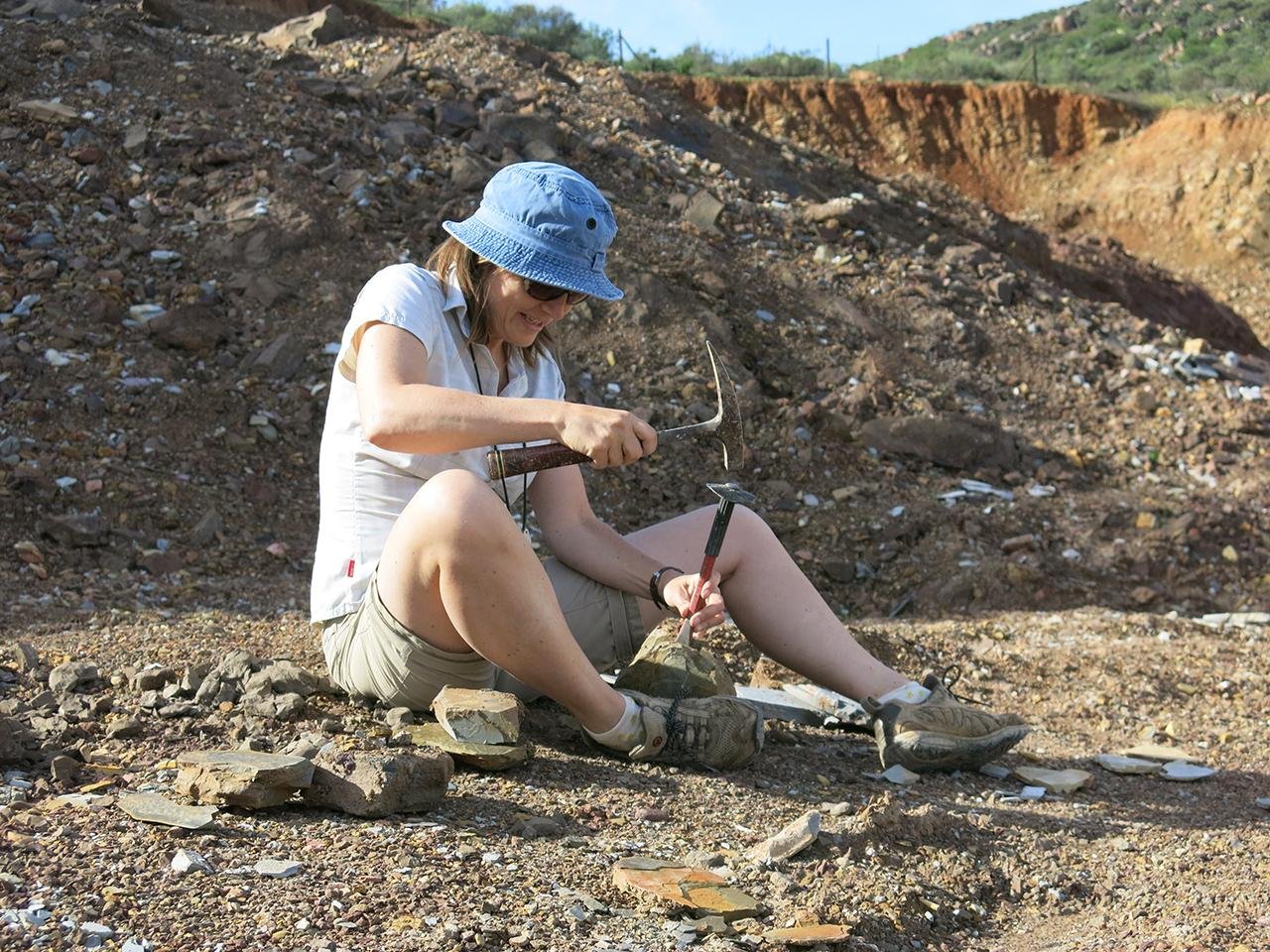A recently identified ancient arthropod species has given scientists a first glimpse into the internal anatomy of prehistoric marine animals. Keurbos susanae, a 444-million-year-old fossil discovered in South Africa, has been described in a new study published in the journal Palaeontology by Professor Sarah Gabbott from the University of Leicester. Unlike most arthropod fossils, which predominantly preserve hard exoskeletons, this specimen provides a first-ever glimpse into its internal organs, including muscles, tendons, and the digestive system.
 The fossil Keurbos susanae – or Sue – in the rock. Credit: University of Leicester
The fossil Keurbos susanae – or Sue – in the rock. Credit: University of Leicester
Nicknamed ‘Sue’ after the lead researcher’s mother, the fossil presents a striking paradox: its soft parts are exquisitely preserved, but its outer parts, such as its legs and head, are missing. “Sue is an inside-out, legless, headless wonder,” said Professor Gabbott. “Her insides are a mineralized time capsule, but her durable carapace, legs, and head are missing – lost to decay over 440 million years ago.”
Arthropods, a group that includes today’s shrimp, lobsters, spiders, and insects, have a rich fossil record dating back more than 500 million years. Soft tissue preservation is very rare, though, so Sue is an extraordinary find that defies traditional fossilization patterns.
The fossil was found in the Soom Shale, a sedimentary deposit located 250 miles north of Cape Town, South Africa. It was a marine basin that survived a cataclysmic glaciation event—one of Earth’s five mᴀss extinctions—which wiped out almost 85% of all life. In the harsh environment, the basin evolved into a refuge for a unique group of ancient marine organisms, one of which was Sue.
 Professor Sarah Gabbott from the University of Leicester, at the site where the fossil was discovered. Credit: University of Leicester
Professor Sarah Gabbott from the University of Leicester, at the site where the fossil was discovered. Credit: University of Leicester
Scientists credit Sue’s extraordinary soft tissue preservation to a special combination of chemical factors in the sediment. The environment was not just oxygen-poor but also rich in hydrogen sulfide, a toxic compound. Such conditions would have most likely preserved the fossil’s delicate internal structures but caused the external features to decay away.
Professor Gabbott first found the fossil at the beginning of her career, but it would be well over two decades before it was fully analyzed and described. The small roadside quarry where Sue was found has since been depleted, and no more finds can be expected. “This has been an ultramarathon of a research effort,” said Gabbott. “The fossil is just so beautifully preserved that every layer of detail needed careful interpretation. I’d always hoped to find new specimens, but it seems after 25 years of searching, this fossil is vanishingly rare.”
 Professor Sarah Gabbott from the University of Leicester, at the site where the fossil was discovered. Credit: University of Leicester
Professor Sarah Gabbott from the University of Leicester, at the site where the fossil was discovered. Credit: University of Leicester
Sue’s classification in the arthropod family tree is unknown due to its lack of external features, making comparisons with other species of the same era difficult. Nevertheless, its unique preservation provides priceless data for the study of the evolution and life history of arthropods of the past.
Naming the fossil after Professor Gabbott’s mother, Susan, was both a personal and professional milestone. “My mother always said I should follow a career that makes me happy—whatever that may be,” she said. “She recently said to me that if I was going to name a fossil after her, I should do it before she became a fossil herself! I tell my mother that I named the fossil Sue after her because she is a well-preserved specimen! But truly, it’s in honor of her unwavering support.”
Sue’s discovery and subsequent study mark a landmark in paleontology, shedding light on an ancient world where life persevered despite extreme conditions.
More information: Gabbott, Sarah. (2025). A new euarthropod from the Soom Shale (Ordovician) Konservat-Lagerstätte, South Africa, with exceptional preservation of the connective endoskeleton and myoanatomy, Palaeontology. DOI:10.1002/spp2.70004





